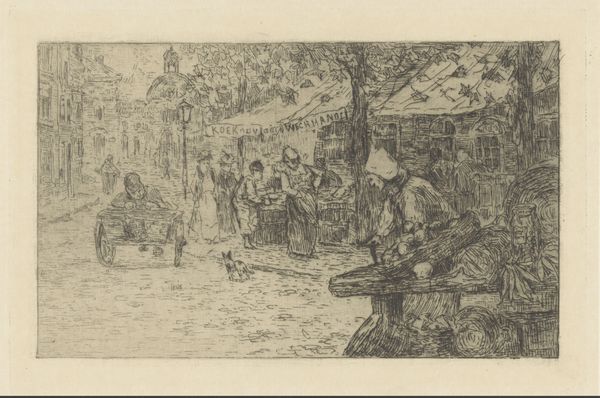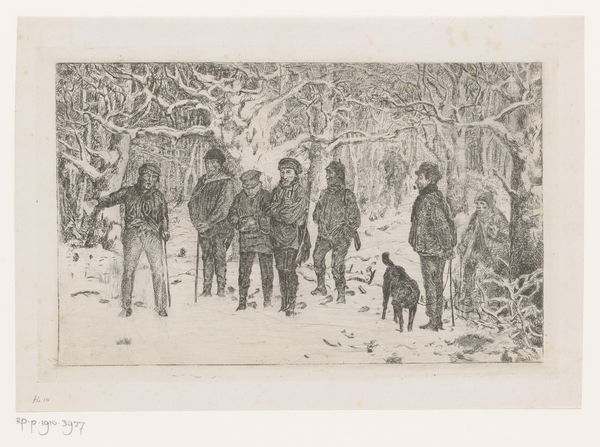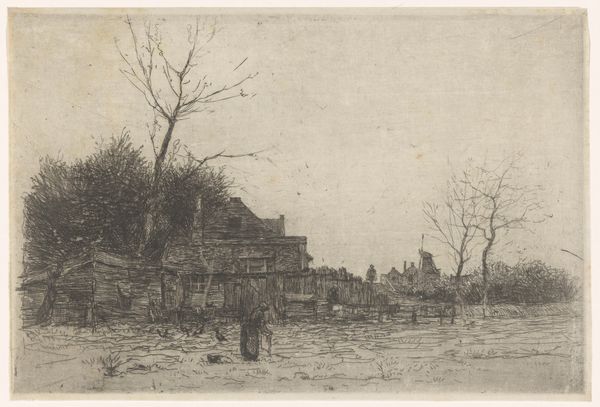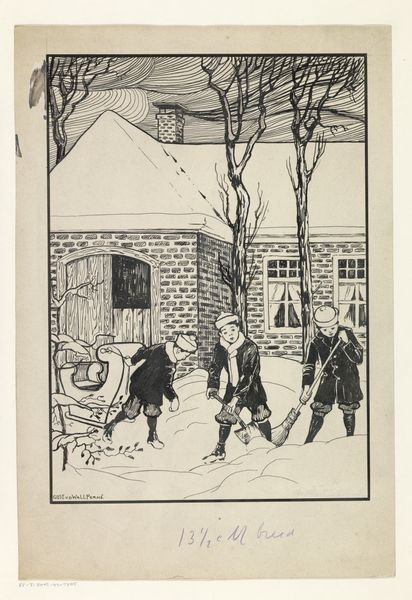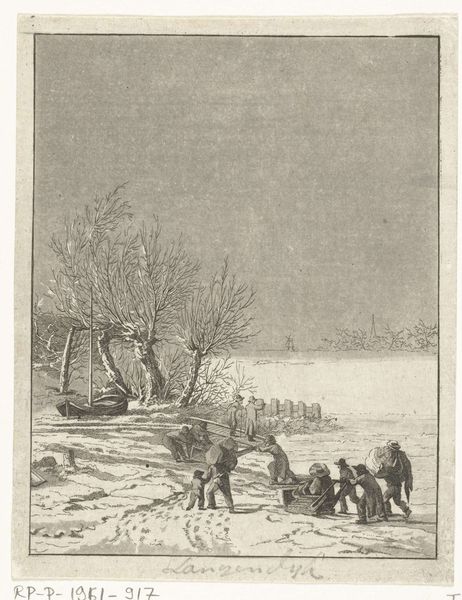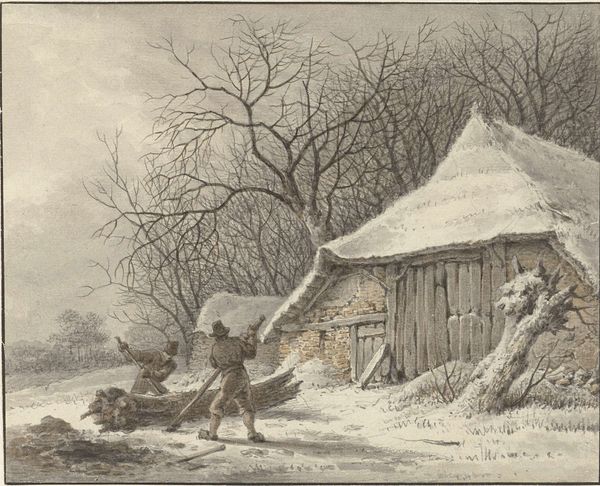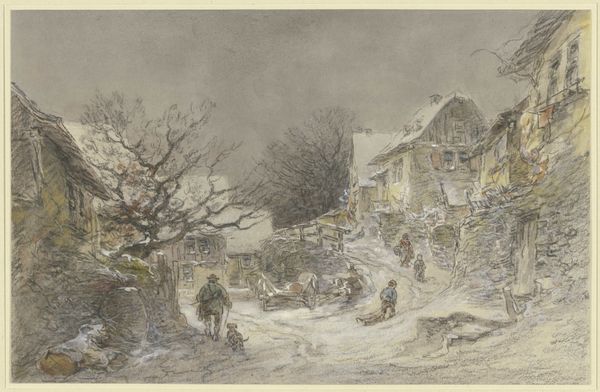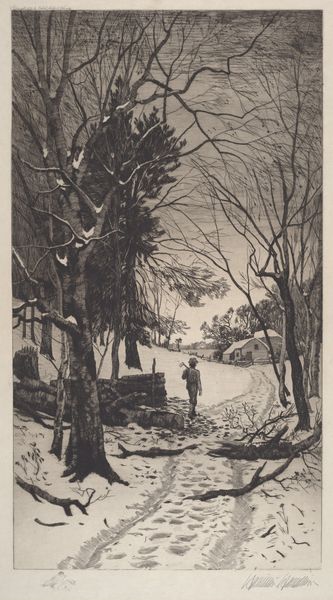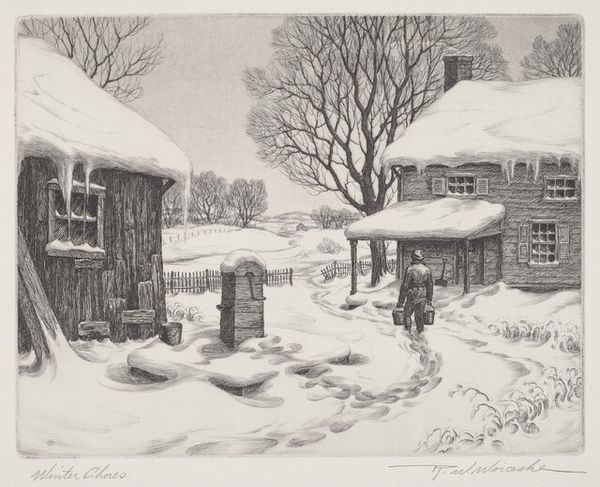
print, etching
# print
#
etching
#
landscape
#
19th century
#
genre-painting
Dimensions: height 95 mm, width 154 mm
Copyright: Rijks Museum: Open Domain
Editor: This is "Straatmuzikanten," street musicians, an 1866 etching by Willem Steelink. The landscape is wintry and a bit bleak. I'm struck by the family watching the musicians - they seem both entertained and…distant. What do you see in this piece? Curator: Beyond the immediate narrative of street musicians performing in a snowy landscape, I see a commentary on class and access to joy. The family is framed within their home, observing from a protected space, while the musicians, likely from a lower economic strata, brave the elements to offer a moment of respite. Editor: That's an interesting perspective. I hadn't considered the economic implications so directly. Curator: Consider the context. Genre painting like this often masked subtle social critiques. The supposed quaintness of the scene might actually highlight disparities. Are the musicians welcomed in, or are they kept at a distance, performing for a pittance? The title “Mari ten Kate,” is it perhaps a reference to a particular person or event, and how would that have influenced contemporary audiences' perceptions? Editor: So, you're suggesting the artist might be prompting us to question our own position as viewers, and the relationship between the privileged and those providing the entertainment? Curator: Exactly. And not only entertainment, perhaps their very survival hinges on this performance. The weather suggests scarcity. Editor: That adds a layer of complexity I initially missed. I appreciate how you linked the image's formal elements to broader socioeconomic questions of the time. Curator: Art is never created in a vacuum, and understanding its historical and social context allows us to engage more deeply with its meaning.
Comments
No comments
Be the first to comment and join the conversation on the ultimate creative platform.

